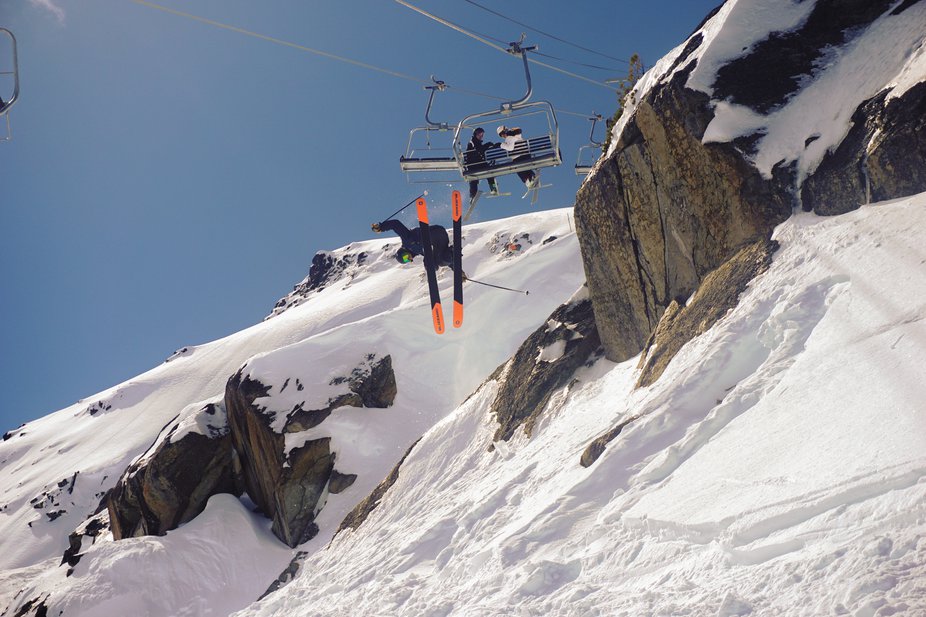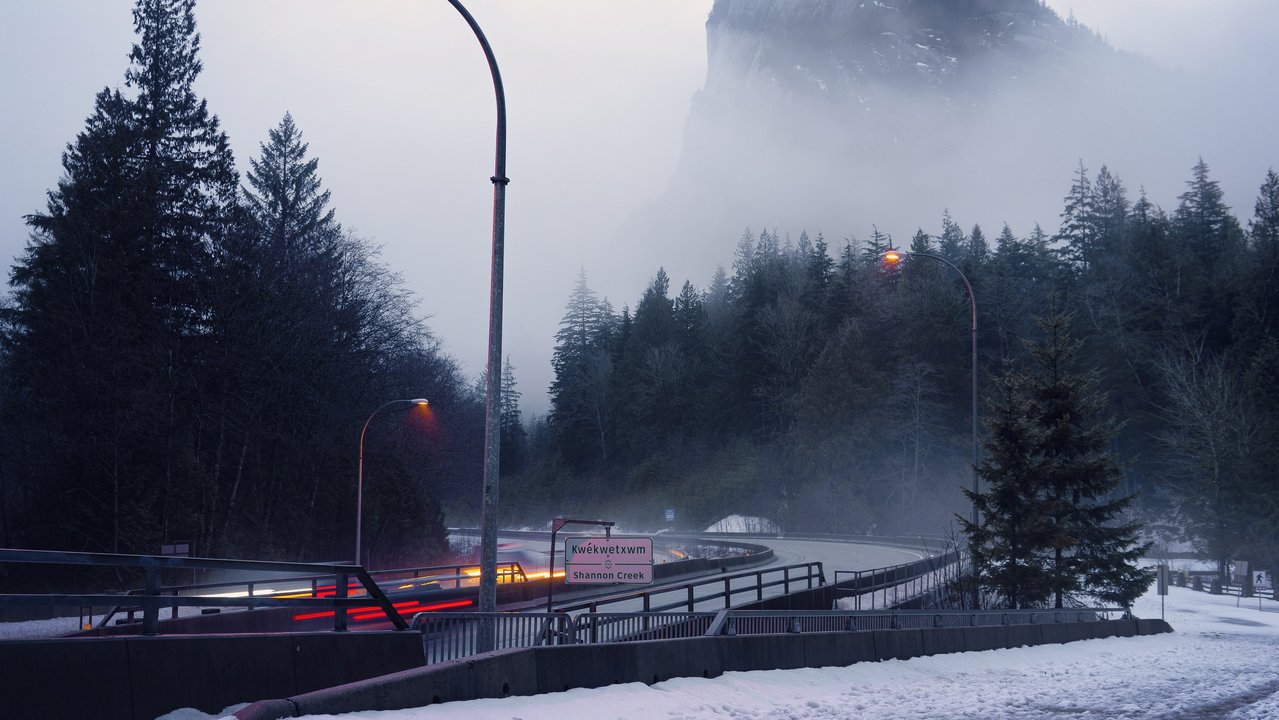COVER PHOTO: Sea-To-Sky Highway, en-route to Whistler, B.C., one of Vail's subsidiary resorts
Sequestered below the guests who can afford the exorbitantly high food costs, in the brown bag area, sits the core skier. Either dining on french fries pilfered from an unfinished meal, or a cup of ramen noodles, you can safely bet that this familiar stereotype will have some shit to say about resort management. Maybe patrol took three hours too long getting the sidecountry open. Or, halfway through the season, the park only boasts a single completely busted tube. And these minor complaints hardly compare to the greater issue that’s not just relevant to the most jaded members of our community, the rising cost of skiing. An unfortunate fact that can sting even more after witnessing a dentist and their family leave a veritable mountain of food in the trash.
The apparent figurehead of prohibitive costs and management that caters more towards big-spenders than actual skiers is the resort conglomerate. While these notions may be outdated, partially as a result of Vail's shifting price policies (more on this later), they still remain as chief concerns against the conglomerate. And, if you’ve talked to anyone who skis more than a few times a year it’s pretty easy to guess who I’m referring to, their name emerging in the oft-uttered phrase that drips with undisguised disgust, fucking Vail.
But what if conglomerates actually have something to offer to the skiing community, particularly in the face of an increasingly unbalanced winter climate?
Anecdotally, my own experiences with winter over the past 20 years can illustrate a small corner of the universally shrinking ski season. Perhaps it’s the golden-hue of nostalgia, but every storm abruptly concluding with a soul crushing freeze-thaw cycle seemed abnormal during my childhood. And, when I moved to the notoriously cold Montana this year, I was sorely disappointed by both the lack of snow, and cold temperatures. This observation was reinforced when I noticed the three slightly haunted looking resorts near Missoula that have been forced to close due to a lack of snow.
Anecdotes can’t accomplish what data sets can, though, partially because my observations of winter are tied to whatever geographic location I may be in. Sometimes it sucks on the west coast, and sometimes it sucks on the east coast (maybe a little more often on the east coast), and that’s how winter works. Across the whole geographic spectrum, though, the data (NASA, EPA, NOAA, the list goes on) asserts that year after year the world’s climate keeps getting a bit warmer. Higher temperatures mean less snow and more rain, and, unless ski resorts have a fiscally responsible contingency plan involving exceptionally long rain powered water slides, it’s difficult to imagine maintaining a profit without the promise of fresh snow in the forecast.
Today, many resorts are presented with an unfortunate adapt or die scenario, and there’s plenty of information on how costly these changes can be. For instance, an analysis of Loon resort snowmaking practices published by the International Mountain Society in 2017 found that the suitable time frame for snowmaking in the region was decreasing year by year. The resort responded by upping the intensity of snowmaking practices, which was effective but necessitated ever-increasing water usage in a smaller and smaller time frame. These efforts didn’t come without a price tag, either, and they join several other costly adaptations (think bike parks, astroturf runs, fridge resorts, and golf courses) that resorts must deploy to keep the lifts turning in the face of warmer temperatures. In surviving climate change, it seems that money is the name of the game, and guess who's got a lot of money?
Good guess, the answer is the titanic megacorps, like Vail.
Vail’s slightly ominous resort gobbling acquisition strategy reached peak velocity with the purchase of Whistler Blackcomb in 2016 for $1.6 billion. Since then, Vail has continued to bolster their portfolio, reaching the staggering number of 37 resorts worldwide as of 2021. This strategy of aggressive expansion might appear purely as an assuage to Vail’s stakeholders, a notion further emphasized by the company's increasing valuation. At the time of Vail’s initial public offering (IPO) in 1997 their stock price ran $22, today, their cost sits at $286.23 (after a brief fall from $315). But, regardless of intent, the formation of resort monopolies created a new model for lift-accessible skiing.

IMAGE: Berkeley spins under Peak Chair at Whistler B.C.
COVID was the stress test. While Vail saw significant revenue loss this season as a result of reduced pass sales and lodging bookings, it still announced to its shareholders that it held $614 million in liquidity (available cash on hand) in February 2021. This means that for its expansive resort portfolio, COVID has been a bump in the road, rather than a total disaster. This avoidance of bankruptcy occurred during a season where the ski industry as a whole faced $29 billion in losses.
Vail's secure finances have allowed them to make an unprecedented pricing shift for their ubiquitous Epic pass. On March 24th they announced that they have cut the cost of the Epic Pass by 20% for the time being, meaning that the cost of the full pass and the reduced pass are currently $783 and $583, respectively. For context, I purchased a single resort pass for about $600 this past season.
Robert Katz, the CEO of Vail stated the following about the price shift in the March 24th press release:
“We believe the price reduction will drive incremental revenue, given our comprehensive lineup of pass products that can fit any guest’s needs, our personalized and data-driven marketing efforts, and the fact that the vast majority of all visits from our passes occur at our network of owned and operated resorts", and that "we expect that today’s price reductions will generate incremental pass revenue from new unit sales in Fiscal 2022 that will approximately offset any pass revenue lost from the new discount, and we believe that in future years the compounding impact of retaining guests in our program will drive material increases in pass revenue".
In addition to pass price cuts, Vail issued pass credits to those who lost time as result of COVID closures during last season. While the issue of overcrowded (an issue entwined with the accessibility of the sport, a conundrum too large to fully address in this article) resorts as a result of Vail's aggressive marketing strategies still loom large, it's undeniable that they're seeking to offer products that appeal to the 'core' crowd.
As a contrast, typical finances for standalone resorts are worth mentioning. An industry analysis published by the National Ski Areas Association (NSAA) that studied the 2017-2018 season found that 26 percent of resorts (of the 112 included in their study) reported an average yearly loss of $2 million due to high operating costs and tight profit margins. The resorts in this lower profit bracket were typically small-scale mom and pop operations, comparable to my current home resort of Snowbowl.
There are two primary points here. First, that climate change will necessitate some degree of adaptation and product diversification by resorts (which will be costly). Second, that reduced snowfall will likely drive resort profits down. Vail, by design, is equipped to deal with these challenges in a way that smaller resorts are not. With the pandemic season operating as a historic benchmark, Vail’s business model (it’s eminently toutable full ‘resort experience’) has demonstrated that it can avoid bankruptcy even with reduced profits. Similarly, its geographically expansive resort portfolio allows it to take advantage of inconsistent snow years. If the west coast gets dumped on, and the east coast stays dry, Vail can disperse its income to bolster the resorts within its portfolio that are struggling. Lone resorts don’t have this advantage.
Now, I don’t make this argument to shit-talk the local resort. Many of my favorite days on snow came to me by way of two-seaters and non-existent lift lines and even more of my most frustrating days were made worse by endless lift lines only bolstered by an over-saturation of Epic pass holders. But, lift-accessed skiing is entering a new period of increased instability, and it’s worth considering the benefits of the resort conglomerate model championed by Vail. The primary benefit being a combination of stable, semi-affordable, lift-accessible skiing.
And, luckily, for those who remain disillusioned with the large corporate presence in skiing, there are plenty of possible futures that don’t necessitate a singular or dual (Alterra, Vail’s primary competitor) monopoly. Perhaps smaller resorts could band together and create cooperatives or small resort groups designed to adapt and survive, among other potential approaches. Ultimately, though, as the ice caps shrink and the winters shorten, it may be important to turn to unexpected or even vilified aspects of the freeskiing world for solutions to ensure that we can keep the bull wheels spinning.


Comments